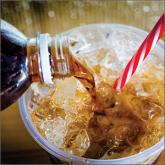Article

What we know—and don’t—about non-nutritive sweeteners
- Author:
- Joy Dugan, MPH, DHSc, PA-C
- Jeff W. Chiu, DO
- Jay H. Shubrook, DO, FAAFP, FACOFP
- Clipper F. Young, PharmD, MPH, CDE, BC-ADM, BCGP
Here’s what’s known about the safety of these sweeteners and their effect on weight, appetite, and the risk for type 2 diabetes.
